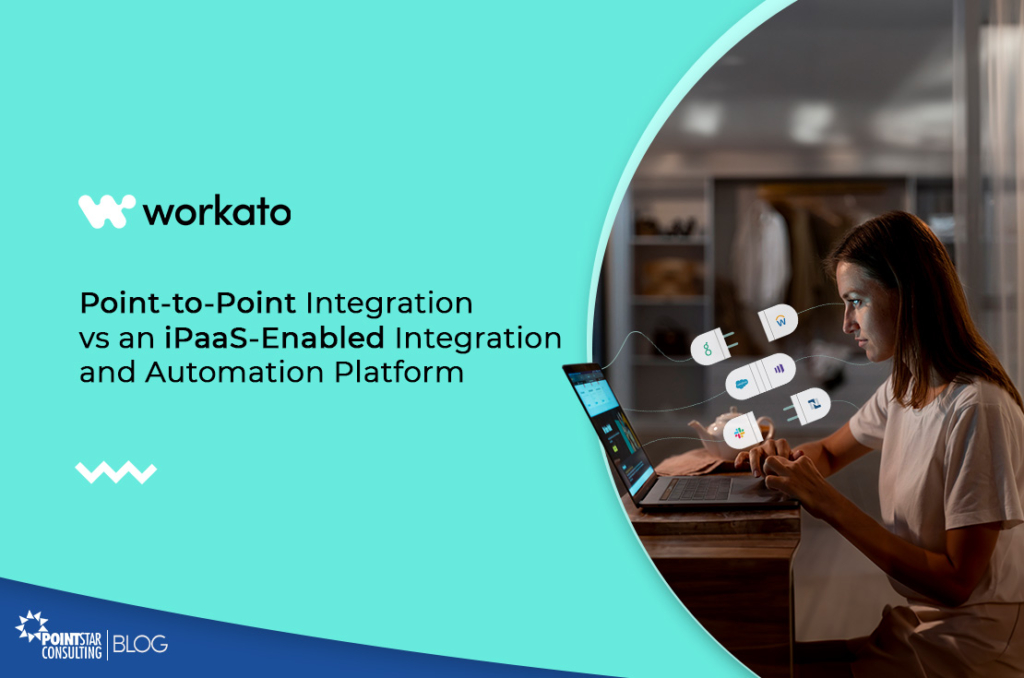This article addresses a common dilemma for businesses undertaking digital transformation — point-to-point (P2P) integration vs an iPaaS-Enabled Integration and Automation Platform.
Accumulation of a Mountainous Stack of Different Applications
As organisations grow, so does their technology stack. Businesses need to integrate their technology stack to operate efficiently and ensure they reap the full benefits of each solution. Integration will help remove data silos and provide organisations with much-needed visibility.
However, the challenges facing businesses in the digital age are different from any other. Integration of stack alone will not enable a company to survive, much less thrive. Automating critical yet tedious processes can elevate organisations and position them on a high-growth trajectory.
While there are a few different avenues businesses can pick to enable integration, in this article, we will train our sights on point-to-point and how it fares against one of the best integration platform-as-a-service (iPaaS) providers in the world right now.
Point-to-Point Integration (P2P)
Point-to-point integration has long been a popular method for connecting different applications and systems. This approach involves creating direct, custom connections between pairs of applications, allowing for data exchange and process automation. While P2P integration has strengths, it also presents significant challenges that can hinder business efficiency and scalability.
Strengths of Point-to-Point Integration
Customisation
P2P integration offers high levels of customisation, allowing businesses to tailor connections to their specific needs and requirements.
Direct Control
Businesses have direct control over data flow and integration processes, ensuring that information is transmitted securely and accurately.
Simplicity
For smaller-scale integrations involving only a few applications, P2P can be a relatively simple and straightforward approach.
Weaknesses of Point-to-Point Integration
Complexity
As the number of applications and integrations grows, P2P becomes increasingly complex and difficult to manage.
Scalability
P2P integration can be challenging to scale as businesses expand and introduce new applications.
Maintenance
Maintaining and updating P2P connections can be time-consuming and resource-intensive.
Vendor Lock-in
P2P integration can lead to vendor lock-in, making it difficult to switch to alternative solutions.
Workato, the Leader in the iPaaS World
Recognising the limitations of P2P integration, many businesses are now turning to the promising solutions offered by iPaaS platforms, which bring a new level of efficiency and flexibility.
In this crowded field, one company stands out as a leader. With its cloud-based integration platform, Workato has simplified connecting applications and automating workflows, instilling confidence in businesses to achieve their integration goals.
With Workato, businesses can:
Connect Hundreds of Applications
Workato offers pre-built integrations for popular applications, making it easy to connect different systems.
Automate Complex Workflows
Create automated workflows to streamline processes and reduce manual tasks.
Scale with Ease
Workato is designed to scale with your business, handling increasing workloads and complexity.
Reduce Costs
Save time and money by automating repetitive tasks and eliminating manual errors.
In a Nutshell
While P2P integration can be a viable option for smaller-scale integrations, it often falls short in terms of scalability, maintainability, and cost-effectiveness. Workato provides a more efficient and flexible solution for businesses that need to connect and automate a wide range of applications. By leveraging Workato’s capabilities, organisations can improve their operational efficiency, reduce costs, and drive innovation.



